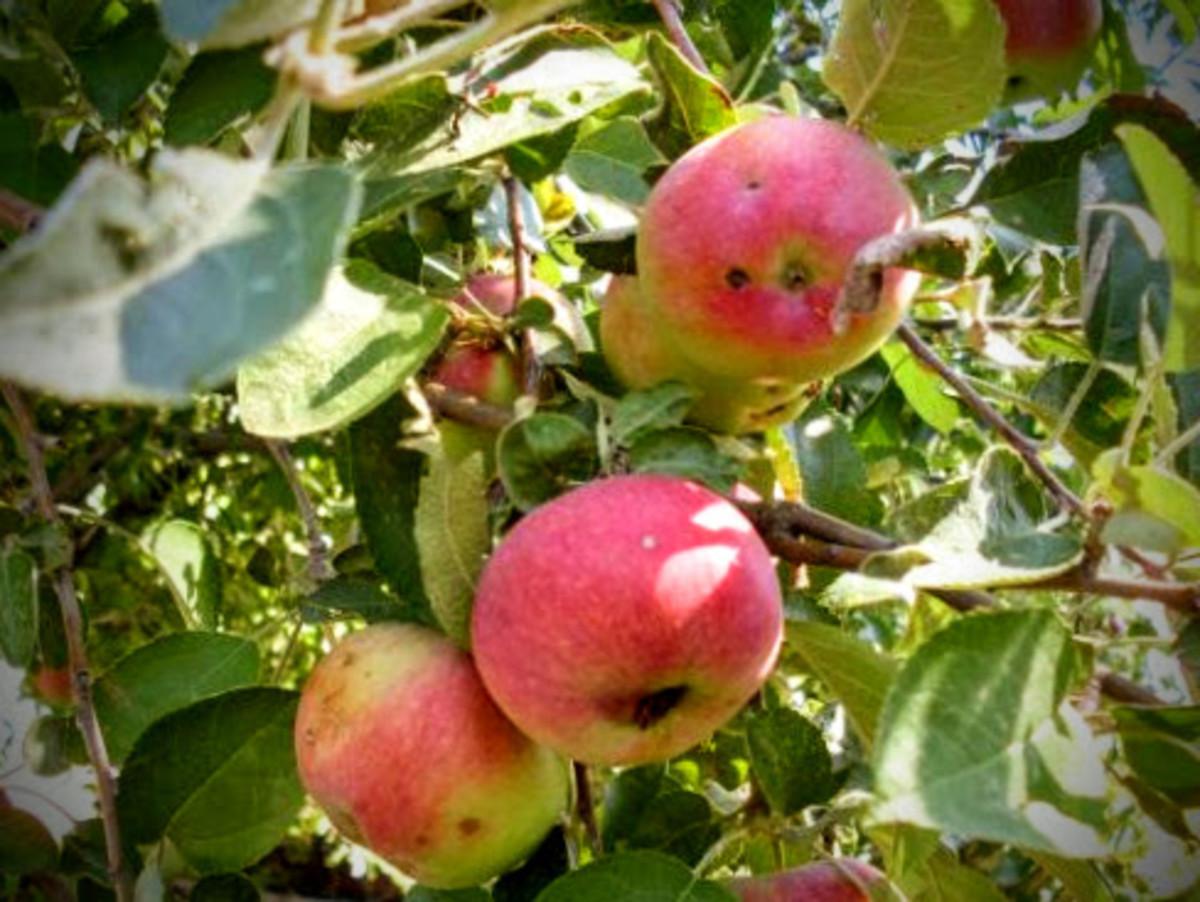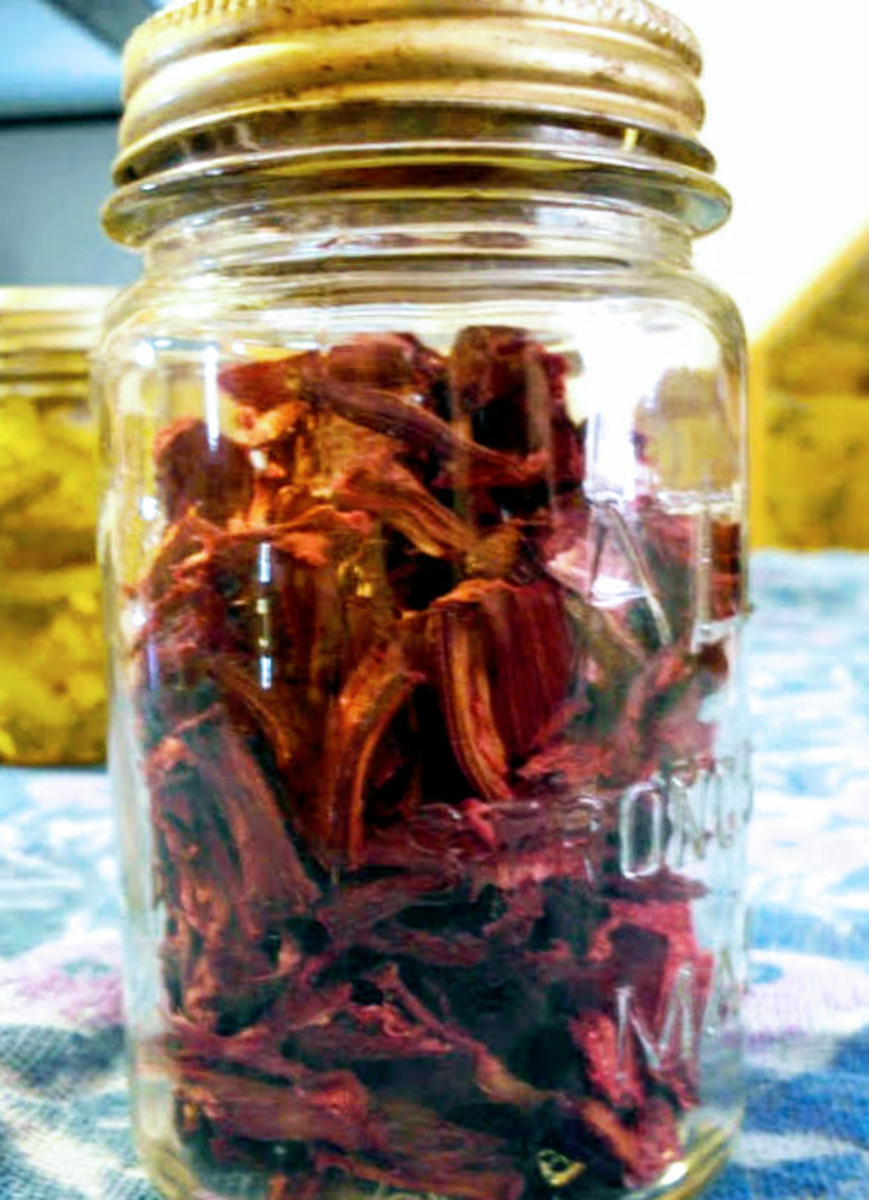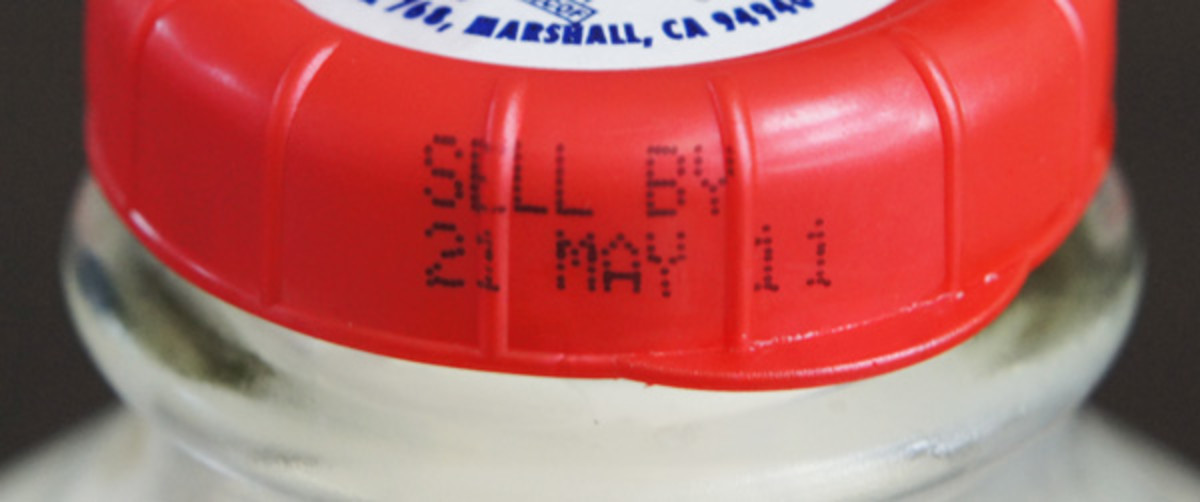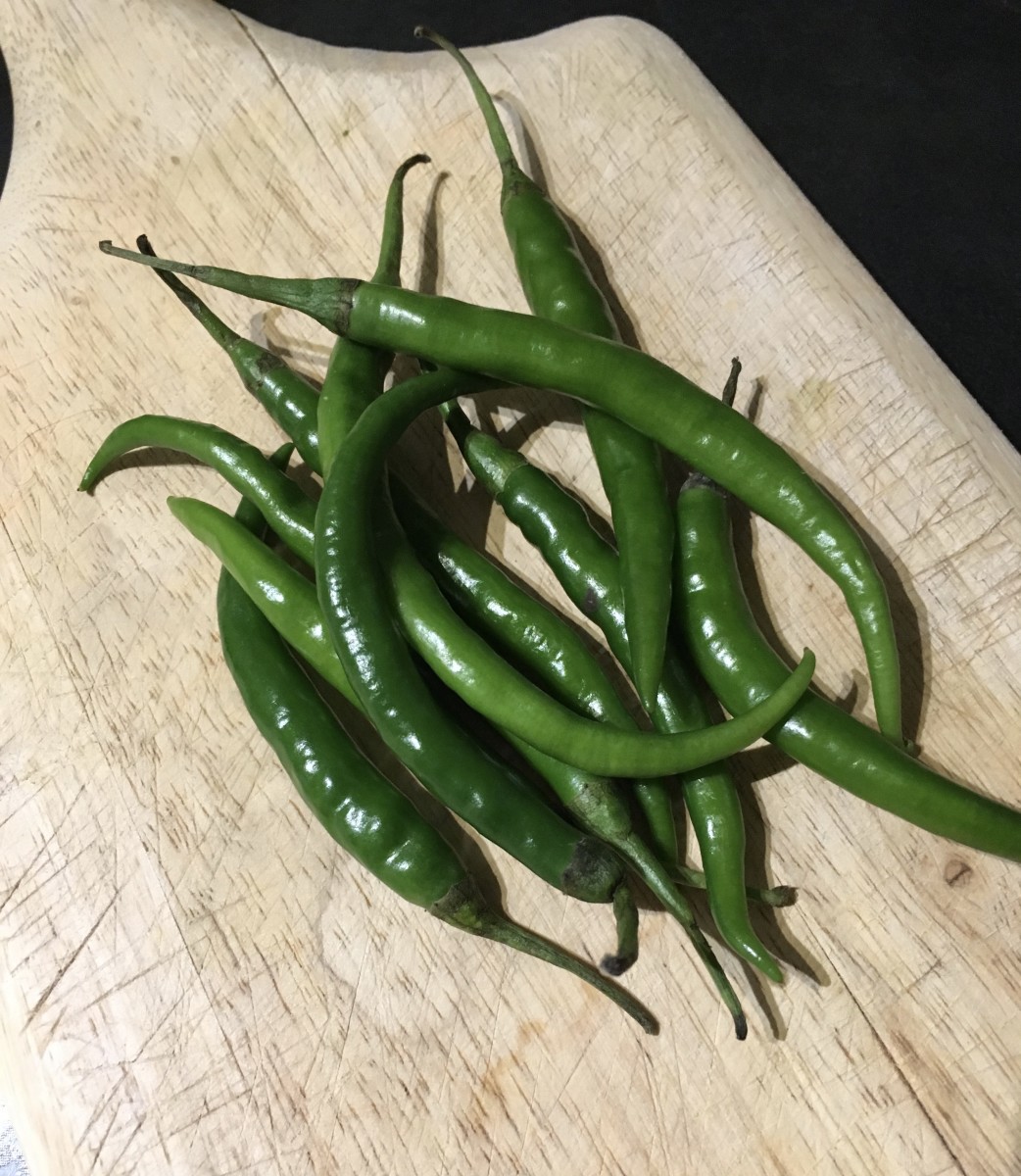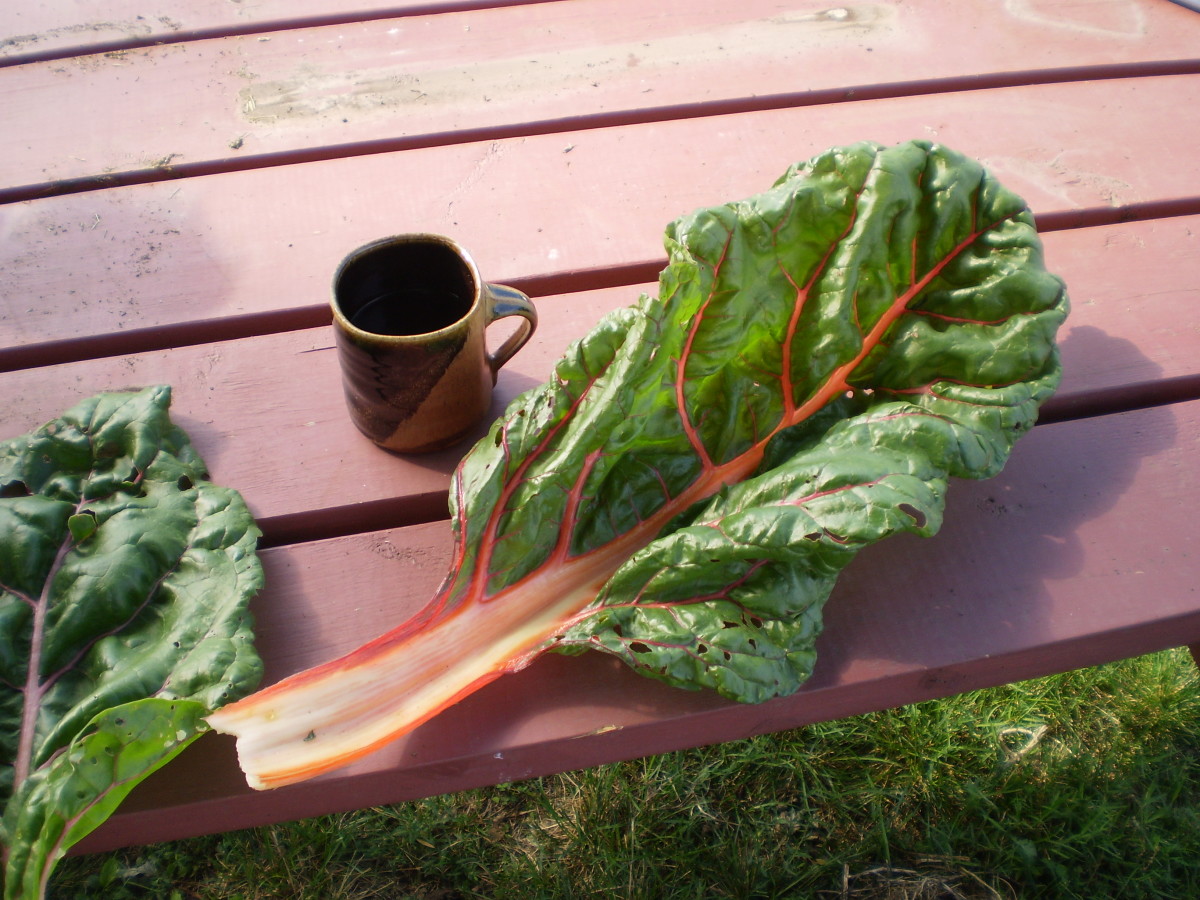How to Dry Melons for Snacks, Salads, Drinks, and Other Recipes: An Illustrated Guide
Wonderful Options
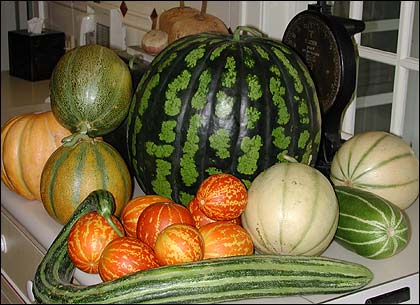
Which Melons to Dry?
Do you have a surplus of melons? Drying can turn them into a wonderful, candy-like snack or ingredient.
Virtually any good-quality melon can be dried. Don't dry any that are bruised, very soft (over-mature), or beginning to ferment. Also, some types dry better than others. Watermelons give the least satisfactory results, but are still good. They dry to a somewhat leathery consistency, and remain softer (and stickier!) during storage. Muskmelons, cantaloupes, honeydew melons, and similar firm-fleshed types dry best. They store well and remain in individual pieces even during long-term storage of a year or more. (Freezing is best under most conditions.)
Dehydrated melons have many good uses, and with a little bit of experimentation, you will find many ways in which you want to use them. You may even grow a crop - or buy more than usual - just so you can dry them!
I have demonstrated with watermelon, simply because that's the kind I had many of at the time I could take these pictures. But you can use any melons you like.
What You Will Need to Dry Melons
- A dehydrator, either commercial or home-made. Sun-drying might work in very hot, dry weather, but won't be as reliable. In this case, use screens covered with sheets or pillowcases to keep insects off, if you don't have a well-constructed unit surrounded tightly by screening. Flies, bees, wasps, beetles, and other lovelies will be quite attracted to the sugar in the melons!
- Knives and a cutting board or big platter, for slicing melons
- Storage bags or jars. Any freezer zipper bag or tight-sealing jar (even plastic) will do.
- 5-15 minutes per melon for preparation - depending on size - plus drying time (varies a lot!), and cleanup. Expect the total dehydrating time for a full load (in a big, square-type dehydrator) to take anywhere from 8-20 hours, on average. Watermelons take the longest, as they have the most moisture. They will also leave the most juice on your work surface.
Step One - Cut Melon Into Thin, Small Pieces, Arrange on Drying Trays



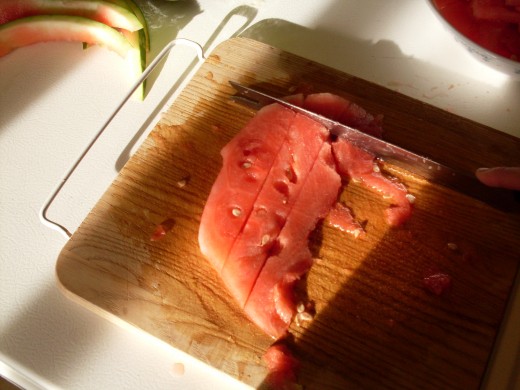
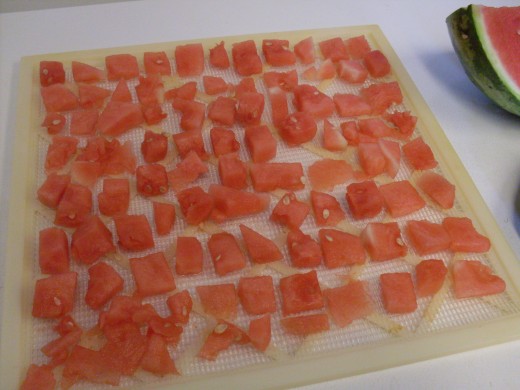
Step Two - Dry Melon Until Hard and Tacky; Store in Jars or Bags
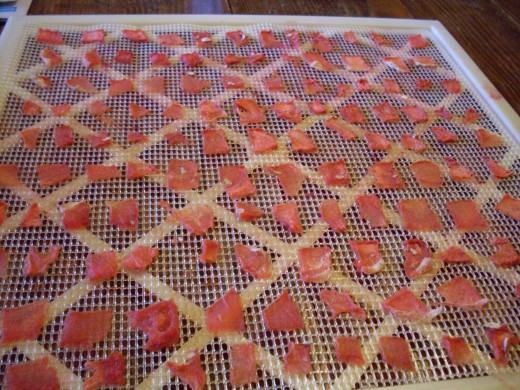
How You Can Use Dried Melon Bits
Dehydrated melon pieces can be used as:
- crunchy additions to salads
- in fruit toppings
- in jams
- in dips
- in smoothies or blender drinks
- in jello molds
- in ice creams
- in fruit ices
- in oatmeal (cooked or not cooked) - try honeydew melon with blueberries and pumpkin seeds!
- in cakes or breads, also pancakes
- anywhere else you want the flavor of melon!
The texture of dried bits is similar to dehydrated pears - somewhat brittle, somewhat chewy, with a high sugar content.
Storing Dehydrated Melon
Freezing dried melon is best for long-term storage. A large quantity of melon will fit in a quart zipper bag or jar, and doesn't clump together. It is always ready for you to shake out a few pieces for whatever recipe you have at hand...or simply snack on a palmful for a pick-me-up.
Depending on the humidity or your home (drier is better), it may be possible to store melon for a few months in a fairly tight-sealing jar on a pantry or cupboard shelf.
I have never had a problem with moths or other pests getting into my melon stores...but if you do, please comment below so the rest of us can learn from your experience.
Cleaning Sticky Dehydrator Trays
The easiest way to clean the larger dehydrator trays is to put them in the bathtub in tepid water, then use a gentle brush to scrub them. You can add dish soap if necessary, then rinse them thoroughly. Usually, melon juice washes off easily after a few minutes' soaking.
The smaller round trays may, of course, go right in your sink, and get the same treatment.
Unless you are drying different types of melon which may flavor each other, it is usually not necessary to wash trays between batches. You can wait until the end of your melon-drying period to clean them, unless insects or other animals have gotten to them...supposing you are drying your food outside in the sun.
Melon Books and Information
Melon Helps
- How to prepare bitter melon
I've always loved eating bitter melon (also known as bitter gourd, and ampalaya in my country) since I was young. It had not occurred to be then that most people hated its bitter taste. Perhaps, my mom... - How to use Bitter Melon (Bitter gourd)
India is a land of ayurveda. Bittergourd, (Bitter melons) a vegetable bitter in taste, is widely used by Indians. It is also called as Karela, and some parts it is called as Parkka Pitla. The scientific name...
© 2011 Joilene Rasmussen



